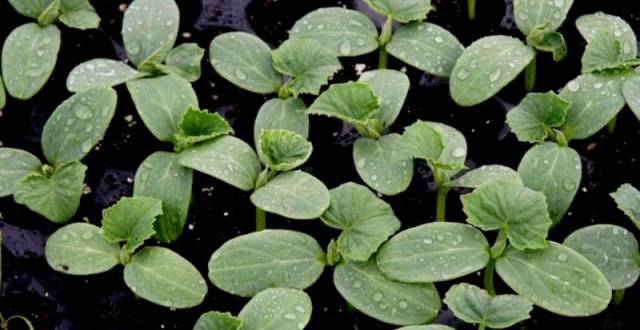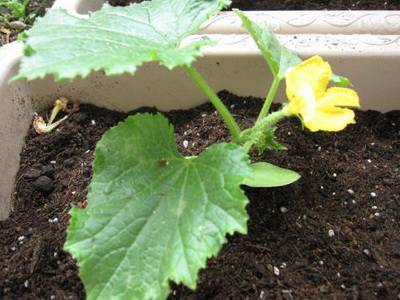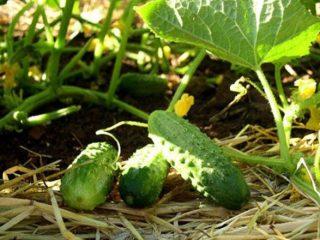Content
Cucumbers have appeared in our lives for a long time. This vegetable was known in Rus' back in the 8th century, and India is considered its homeland. Cucumber seedlingsgrown on the balcony, then planted in a greenhouse or outdoor priming. Let's talk about the basic rules for planting cucumbers with seeds and seedlings so that the resulting harvest meets all your expectations.
Features of planting cucumbers
Cucumbers can be grown in special cassettes, planted in pots, or the seeds of this plant can be directly planted in the garden bed.
To increase the yield of cucumbers, certain nutrients will be required. For example, cucumber seedlings in the middle zone are planted in early June.
Option for planting cucumbers with seeds
Planting seeds and growing cucumber seedlings in cassettes requires certain theoretical knowledge. Let's talk about the basic rules for growing seedlings and some of the subtleties of this process.
Preparing the seeds
If you decide not to waste time on cucumber seedlings, not to look for pots for them, but to immediately plant the seeds in the soil, do not forget that you have labor-intensive work ahead of you.
Before planting, they must be treated in a weak solution of potassium permanganate (manganese permanganate) in order to protect them from various diseases. Next, the cucumber seeds are placed in a container of water for a few minutes. All empty cucumber seeds float to the surface and need to be removed. The remaining seeds are germinated by placing them in pots or other containers, or immediately planted in open ground.
Before directly planting seeds or seedlings of cucumbers, you need to pay attention to preparing the soil. Have you decided to use seeds to grow cucumbers? In this case, warm them up before planting using a gauze bag. Hang it along with the planting material above the radiator or next to a warm stove. Do not forget that cucumber is considered a heat-loving plant. Its seeds can germinate at temperature not lower than 12 degrees. Plant cucumber seeds in the soil to a depth of 2 centimeters. During the sowing process, it is necessary to take into account the fact that during the growth process the seedlings grow. Try not to sow them at a small distance from each other. If planting is carried out using seedlings, this problem practically does not arise.
Such problems do not arise if high-quality seedlings are taken instead of cucumber seeds. This option is convenient for those who are ready to look for pots for seedlings and spend time caring for cucumber seedlings.There is a small risk that the harvest will be of poor quality if the seedlings are not grown correctly. There are also certain difficulties in the process of growing cucumber seedlings at home. First of all, you need to take into account that this plant has a rather fragile root system, so in the process of transplanting cucumber seedlings into the soil, there is a risk of damaging the root system. In this case, the plant will die, and you will not get the desired cucumbers.
In addition to peat pots, you can use cups of yoghurt, kefir, and sour cream as containers for future cucumber seedlings. By planting cucumber seeds in boxes, you will receive significant savings in free space on the windowsill, but in the process of transplanting into the ground, the risk of disturbing the fragile root system of plants increases and their survival rate decreases.
Professionals do not recommend using bags of fermented milk products for seedlings, as they may contain bacteria that cause serious diseases at the roots of cucumber seedlings. The best option for containers for seedlings are peat humus pots. They have porous walls, so the planted seed is provided with a full water-air regime. In addition, they can withstand changes in soil moisture, which means you can water the plants without fear that the pot will leak. Interesting tips for planting seeds and cucumber seedlings are presented in the video:
By planting a cucumber in the soil together with a peat pot, you get a 100% guarantee of seedling survival.In addition, the pot itself will serve as an excellent fertilizer for the developing plant, allowing you to expect an early harvest. Gradually the pot will decompose, and you will not have to remove it from the soil. Before sowing cucumber seeds, the pots are filled with nutritious, moistened soil and it is thoroughly compacted. Next, the cucumber seeds are placed in prepared peat pots, then they are placed on pallets, a layer of gravel or on plastic film. Periodically, the seedlings are watered with water at room temperature.
Once the plants begin to grow, the seedlings are spaced further apart to ensure each individual plant gets enough natural sunlight.
Characteristics of seedlings before planting in the ground
Before planting a plant in open ground, check whether it meets certain requirements. The height of the plant should be at least 25 centimeters, there should be 4-5 full leaves on the trunk. The seedlings must be positioned vertically; to do this, they are tied to a special vertical support.
Seedlings are planted in a greenhouse or in soil unprotected by film only after the soil has been sufficiently warmed by the sun's rays.
Features of soil preparation
Cucumbers can be grown in almost all types of soil, if the site has sufficient aeration and high-quality drainage. The best option for getting a good harvest of cucumbers is soil enriched with humus.The place on the site where you plan to plant prepared cucumber seedlings must also meet certain requirements. It is advisable that a year before planting cucumbers, pumpkin crops (squash, pumpkin, zucchini) are not planted in this area. In this case, you will prevent the accumulation of various pests in young seedlings and protect the plants from numerous diseases.
Thanks to such measures, you will not only protect your seedlings from pests, but can also count on an excellent harvest. If this is not possible, changing the landing site is allowed approximately once every five years. During cultivation, cucumbers will need systematic feeding with nutrients. The ideal soil for planting cucumber seedlings will be the soil in which cabbage and cereal crops were previously planted. The beds in which the plants will be planted must be carefully prepared in advance. The entire area is dug up to a depth of about 25 centimeters, then manure is added to the soil.
Manure is taken at the rate of one bucket of humus per square meter. The next year, organic fertilizers are replaced with mineral ones, then manure can be applied again. The bed is sprayed with a one percent solution of copper sulfate. Then all plants are removed from the soil and the roots are removed. Before starting digging, you can additionally prepare a mixture of a glass of dolomite flour and 2 tablespoons of superphosphate.
Next, you can start digging up the area using just one shovel blade.
Soil insulation option
As soon as the soil is dug up, it is leveled and watered with hot water. As an additional protection of the soil from harmful bacteria, you can use a solution of potassium permanganate. Next, cover the bed with plastic film and leave it under the film for several days.
Features of caring for seedlings
If we are talking about the features of caring for seedlings planted in the ground, then we should note the need for fertilizing, weeding, loosening the soil, and watering. Professionals recommend fertilizing every two weeks. To do this, you need to use thick fresh mullein (organic fertilizer), 2-3 tablespoons of ammonium nitrate. After cucumbers bloom, they need to be fertilized with potassium fertilizers. It is enough to prepare a liter of solution of any potassium salt for four plants. As soon as cucumbers begin to bloom profusely, it is imperative to feed the seedlings with microfertilizers. Professionals recommend using a mixture of zinc sulfate (zinc hydrogen sulfate), manganese sulfate (manganese hydrogen sulfate), and a small amount of boric acid for these purposes. The optimal time for fertilizing cucumber seedlings is the evening.
After completing each watering, it is advisable to add fertile soil under the roots of the plants. In this case, there is no need to carry out additional loosening of the soil.Since the root system of cucumbers is located only in the top layer, with classic loosening of the soil, there is a high probability of damage to the roots of the cucumbers. Loosening the soil is allowed only between individual beds. In order for cucumbers to produce the desired harvest, it is important to water the plants with warm water. It is best to pour water into the barrel in the morning so that it has time to fully warm up during the day.
Conclusion
Depending on the climate in your region, you can grow cucumbers as seedlings or immediately plant sprouted seeds in open ground. Regardless of which option is chosen, it is important to comply with all the basic requirements for growing, feeding, and watering these heat-loving crops.
Particular attention should be paid to the selection of seeds. For example, hybrids allow you to get good yields, but they cannot be used for replanting. They don't like cucumbers, despite the fact that they contain a huge amount of water and plenty of watering. Instead of beautiful and tasty cucumbers, you will get long stems with huge leaves, but the number of fruits will be minimal.


























